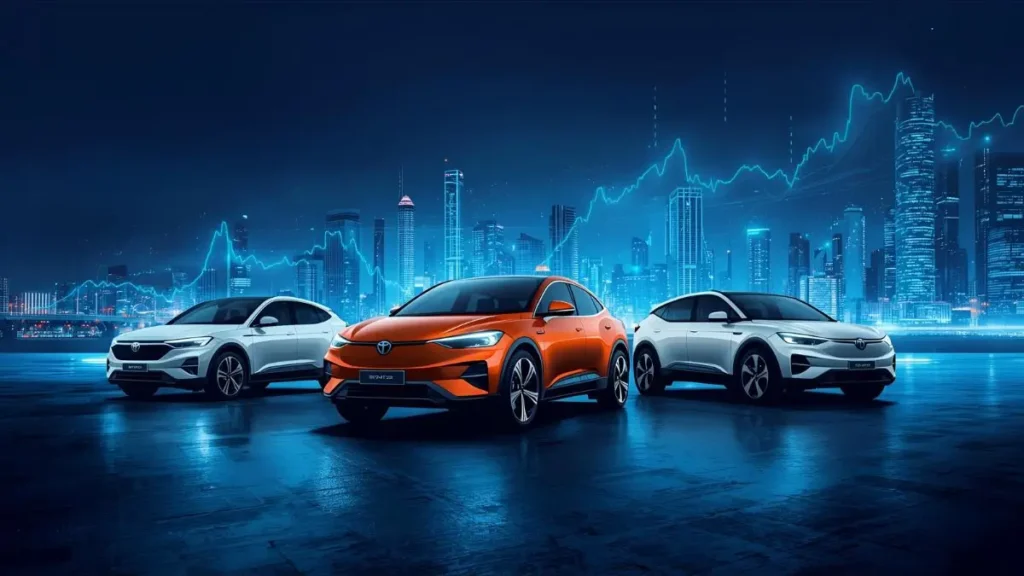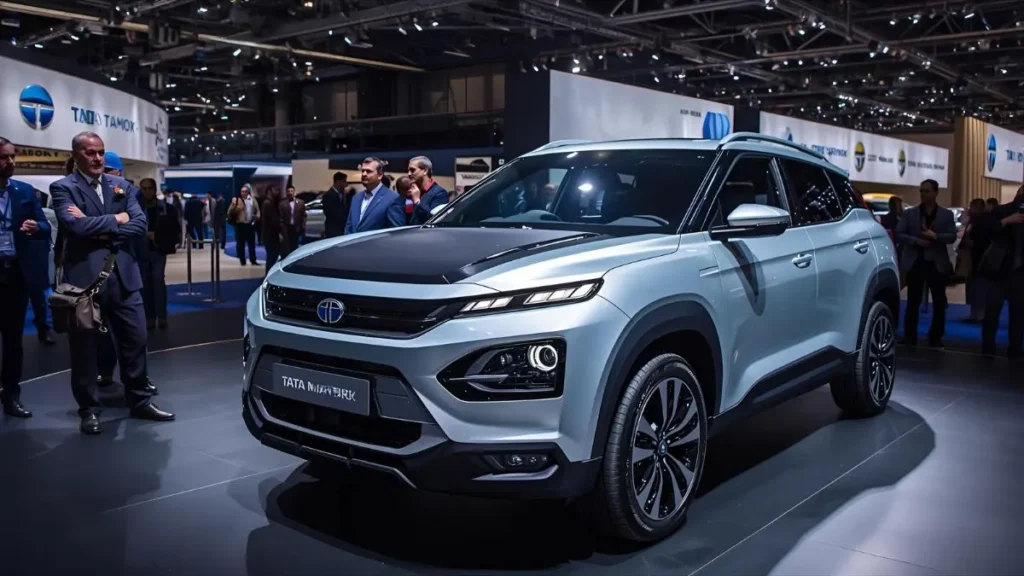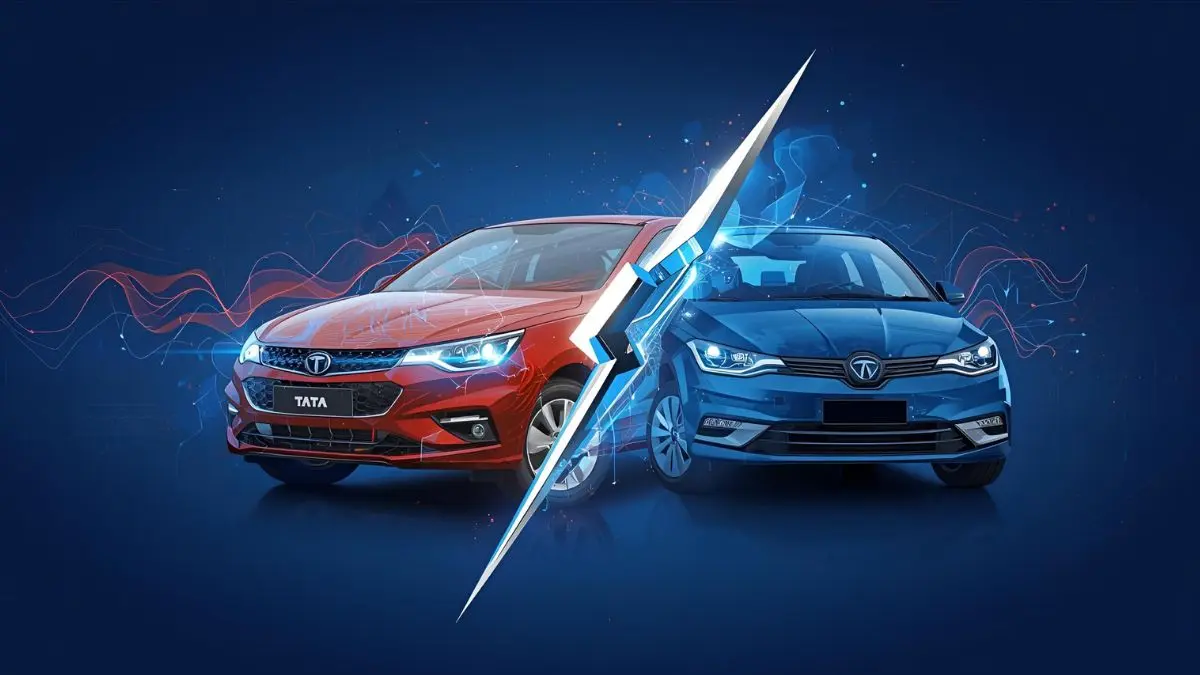Tata Motors is set to complete one of India’s most significant automotive restructurings as the Tata Motors demerger October 2025 becomes effective on October 1, marking the separation of its commercial and passenger vehicle businesses into two independent listed entities. The National Company Law Tribunal’s Mumbai bench provided crucial approval on August 25, sanctioning the Composite Scheme of Arrangement that enables this landmark separation. This historic restructuring will create TML Commercial Vehicles Limited for the trucks and buses division, while passenger vehicles, electric vehicles, and luxury brand Jaguar Land Rover operations remain with the existing entity.
The Tata Motors demerger October 2025 follows overwhelming shareholder support, with 99.9995% of votes cast in favor during the May 6 meeting, reflecting strong investor confidence in the strategic value of focused, independent operations. Shareholders will benefit from a 1:1 entitlement ratio, receiving one share in the new commercial vehicle company for every existing Tata Motors share held.
NCLT Approval Clears Final Legal Hurdle
The Mumbai bench of the National Company Law Tribunal delivered the final regulatory clearance on August 25, 2025, by sanctioning the Composite Scheme of Arrangement under Sections 230-232 of the Companies Act, 2013. This approval removes the last major obstacle for the Tata Motors demerger October 2025, with the company now awaiting the certified copy of the NCLT order to make the restructuring legally effective.

The demerger process, initially announced in March 2024, has followed a systematic timeline. The board of directors approved the scheme in August 2024, followed by the NCLT ordering shareholders’ meetings in March 2025. The cut-off date for determining eligible shareholders was set for March 28, 2025, leading to the decisive shareholder vote on May 6, 2025.
According to regulatory filings, the separation process is expected to be completed within the current quarter (Q2 FY26), with operational completion targeted by December 2025. The Tata Motors demerger October 2025 represents the culmination of careful planning and regulatory compliance over an 18-month period.
Business Separation Creates Focused Entities
Under the approved restructuring scheme, Tata Motors will transfer its commercial vehicle business undertaking, including all assets, liabilities, employees, and related investments, to the newly formed TML Commercial Vehicles Limited (TMLCV). The commercial vehicle division, which reported revenues of approximately ₹17,000 crore in the first quarter, will gain operational independence to pursue strategies tailored specifically to logistics and fleet customers.
The passenger vehicle entity will retain control over consumer cars, luxury vehicles through Jaguar Land Rover, and the rapidly expanding electric vehicle operations under Tata Passenger Electric Mobility (TPEM). However, recent developments indicate challenges in the EV segment, with Jaguar Land Rover shelving plans to manufacture electric vehicles at Tata’s upcoming $1 billion facility in Tamil Nadu due to cost-quality concerns and slowing EV demand.
Both entities will undergo renaming upon the scheme’s effectiveness. The commercial vehicle business will ultimately operate under the Tata Motors name, while the passenger vehicle entity will be renamed as Tata Motors Passenger Vehicles Limited, though both will retain separate stock exchange listings.
Share Allocation and Trading Mechanics
The Tata Motors demerger October 2025 will implement a straightforward 1:1 share allocation ratio, meaning eligible shareholders will receive one fully paid-up share of TML Commercial Vehicles Limited (face value ₹2) for every existing Tata Motors share (face value ₹2) held. This ratio received approval with the overwhelming shareholder mandate in May 2025.
Both companies are expected to begin separate listings on the National Stock Exchange and Bombay Stock Exchange by the third quarter of fiscal year 2026. The record date determining shareholder eligibility for new shares will be announced closer to the completion through official stock exchange notifications. Following the record date announcement, Tata Motors shares will trade ex-demerger until the new entity begins independent trading.
The demerger structure ensures that shareholders maintain identical stakes in both entities, enabling independent trading and investment opportunities based on individual business performance. This mechanism allows investors to make targeted decisions about commercial vehicle versus passenger vehicle exposure in their portfolios.
Market Response and Stock Performance
Tata Motors stock has experienced volatility around the demerger announcement, with shares trading at ₹707.45 as of September 19, 2025, reflecting a decline of approximately 5% year-to-date. The stock reached a 52-week high of ₹1,000.40 in September 2024 but has faced downward pressure amid broader automotive sector challenges.
Market analysts suggest that the short-term volatility often accompanies major corporate restructurings as investors reassess valuations for newly separated entities. SEBI-registered analyst Pradeep Carpenter noted that the Tata Motors demerger October 2025 aims to create “two focused, agile companies” providing clearer visibility into margins, cash flows, and growth trajectories for each business segment.
The company’s financial performance shows mixed signals, with quarterly revenue declining 12.47% quarter-over-quarter, marking the lowest decline in three years. However, Tata Motors delivered strong profit growth of 37.2% CAGR over the last five years and maintains a healthy return on equity of 28.1%. The current market capitalization stands at ₹2,60,705 crores with a P/E ratio of 12.0.
Strategic Benefits and Value Creation
The Tata Motors demerger October 2025 addresses what analysts term the “conglomerate discount” that often applies to diversified companies operating across different market cycles. By creating separate entities, each business can pursue differentiated strategies with greater agility while reinforcing accountability to enhance shareholder value.
The commercial vehicle unit will focus exclusively on trucks, buses, and goods carriers, allowing management to tailor operations for logistics and fleet customers. This segment serves different demand patterns and customer requirements compared to passenger vehicles, making independent operation strategically advantageous.

Meanwhile, the passenger vehicle entity gains the flexibility to concentrate on consumer innovation, luxury vehicle development through Jaguar Land Rover, and electric vehicle market expansion. The entity will leverage synergies across passenger vehicles, electric vehicles, and JLR, particularly in autonomous technology and vehicle software development.
Industry observers expect both companies to demonstrate stronger operational performance and clearer investment propositions once the Tata Motors demerger October 2025 becomes effective, potentially eliminating the valuation discount historically applied to conglomerate structures.
Future Outlook and Growth Prospects
The completion of the Tata Motors demerger October 2025 positions both entities for independent growth trajectories aligned with their respective market dynamics. The commercial vehicle company will benefit from India’s infrastructure development and logistics expansion, while the passenger vehicle entity can focus on the growing demand for electric and luxury vehicles.
However, challenges remain in the electric vehicle segment, with Jaguar Land Rover postponing launches of electric Range Rover and Jaguar models, pushing deliveries from late 2025 to 2026. The luxury unit has also revised its EBIT margin target for FY26 to 5-7%, down from the earlier 10%, citing global market uncertainty and new tariffs affecting international shipments.
Both companies will trade independently by Q3 FY26, enabling investors to make targeted investments based on individual business performance and growth prospects. The separate listings will provide transparency into each entity’s financial performance and strategic execution, potentially unlocking value that was previously obscured in the combined structure.
The Tata Motors demerger October 2025 represents a pivotal moment for India’s automotive industry, creating two focused companies better positioned to navigate their respective market challenges and capitalize on emerging opportunities in commercial transportation and passenger mobility.
Read also:







